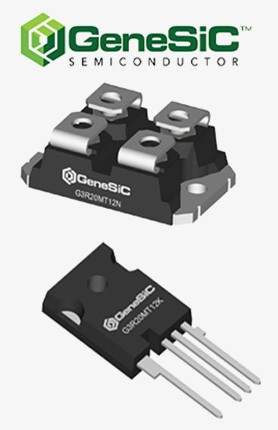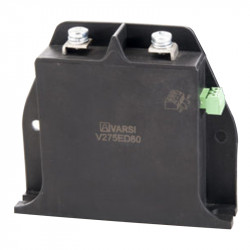-
BackX
-
Components
-
-
Category
-
Semiconductors
- Diodes
- Thyristors
-
Electro-insulated Modules
- Electro-insulated Modules | VISHAY (IR)
- Electro-insulated Modules | INFINEON (EUPEC)
- Electro-insulated Modules | Semikron
- Electro-insulated Modules | POWEREX
- Electro-insulated Modules | IXYS
- Electro-insulated Modules | POSEICO
- Electro-insulated Modules | ABB
- Electro-insulated Modules | TECHSEM
- Go to the subcategory
- Bridge Rectifiers
-
Transistors
- Transistors | GeneSiC
- SiC MOSFET Modules | Mitsubishi
- SiC MOSFET Modules | STARPOWER
- Module SiC MOSFET ABB’s
- IGBT Modules | MITSUBISHI
- Transistor Modules | MITSUBISHI
- MOSFET Modules | MITSUBISHI
- Transistor Modules | ABB
- IGBT Modules | POWEREX
- IGBT Modules | INFINEON (EUPEC)
- Silicon Carbide (SiC) semiconductor elements
- Go to the subcategory
- Gate Drivers
- Power Blocks
- Go to the subcategory
- Electrical Transducers
-
Passive components (capacitors, resistors, fuses, filters)
- Resistors
-
Fuses
- Miniature Fuses for electronic circuits - ABC & AGC Series
- Tubular Fast-acting Fuses
- Time-delay Fuse Links with GL/GG & AM characteristics
- Ultrafast Fuse Links
- Fast-acting Fuses (British & American standard)
- Fast-acting Fuses (European standard)
- Traction Fuses
- High-voltage Fuse Links
- Go to the subcategory
- Capacitors
- EMI Filters
- Supercapacitors
- Power surge protection
- TEMPEST emission revealing filters
- Surge arrester
- Go to the subcategory
-
Relays and Contactors
- Relays and Contactors - Theory
- 3-Phase AC Semiconductor Relays
- DC Semiconductor Relays
- Controllers, Control Systems and Accessories
- Soft Starters and Reversible Relays
- Electromechanical Relays
- Contactors
- Rotary Switches
-
Single-Phase AC Semiconductor Relays
- AC ONE PHASE RELAYS 1 series| D2425 | D2450
- One phase semiconductor AC relays CWA and CWD series
- One phase semiconductor AC relays CMRA and CMRD series
- One phase semiconductor AC relays - PS series
- Double and quadruple semiconductor AC relays - D24 D, TD24 Q, H12D48 D series
- One phase semiconductor relays - gn series
- Ckr series single phase solid state relays
- One phase AC semiconductor relays for DIN bus - ERDA I ERAA series
- 150A AC single phase relays
- Rail Mountable Solid State Relays With Integrated Heat Sink - ENDA, ERDA1 / ERAA1 series
- Go to the subcategory
- Single-Phase AC Semiconductor Relays for PCBs
- Interface Relays
- Go to the subcategory
- Cores and Other Inductive Components
- Heatsinks, Varistors, Thermal Protection
- Fans
- Air Conditioning, Accessories for Electrical Cabinets, Coolers
-
Batteries, Chargers, Buffer Power Supplies and Inverters
- Batteries, Chargers - Theoretical Description
- Modular Li-ion Battery Building Blocks, Custom Batteries, BMS
- Batteries
- Battery Chargers and Accessories
- Uninterruptible Power Supply and Buffer Power Supplies
- Inverters and Photovoltaic Equipments
- Energy storage
- Fuel cells
- Lithium-ion batteries
- Go to the subcategory
-
Automatics
- Spiralift Lifts
- Futaba Drone Parts
- Limit Switches, Microswitches
- Sensors, Transducers
-
Infrared Thermometers (Pyrometers)
- IR-TE Series - Water-proof Palm-sized Radiation Thermometer
- IR-TA Series - Handheld Type Radiation Thermometer
- IR-H Series - Handheld Type Radiation Thermometer
- IR-BA Series - High-speed Compact Radiation Thermometer
- IR-FA Series - Fiber Optic Radiation Thermometer
- IR-BZ Series - Compact Infrared Thermometers
- Go to the subcategory
- Counters, Time Relays, Panel Meters
- Industrial Protection Devices
- Light and Sound Signalling
- Thermographic Camera
- LED Displays
- Control Equipments
- Go to the subcategory
-
Cables, Litz wires, Conduits, Flexible connections
- Wires
- Cable feedthroughs and couplers
- Litz wires
-
Cables for extreme applications
- Extension and Compensation cables
- Thermocouple cables
- Connection cables for PT sensors
- Multi-conductor wires (temp. -60C to +1400C)
- Medium voltage cables
- Ignition wires
- Heating cables
- Single conductor cables (temp. -60C to +450C)
- Railway cables
- Heating cables Ex
- Cables for the defense industry
- Go to the subcategory
- Sleevings
-
Braids
- Flat Braids
- Round Braids
- Very Flexible Flat Braids
- Very Flexible Round Braids
- Cylindrical Cooper Braids
- Cylindrical Cooper Braids and Sleevings
- Flexible Earthing Connections
- PCV Insulated Copper Braids (temp. up to 85C)
- Flat Aluminium Braids
- Junction Set - Braids and Tubes
- Steel Braids
- Go to the subcategory
- Traction Equipment
- Cable Terminals
- Flexible Insulated Busbars
- Flexible Multilayer Busbars
- Cable Duct Systems
- Go to the subcategory
- View all categories
-
Semiconductors
-
-
- Suppliers
-
Applications
- CNC Machine Tools
- DC and AC Drives (Inverters)
- Energetics
- Energy bank
- Equipment and Components for Hazardous Areas [Ex]
- Equipment for Distribution, Control and Telecommunications Cabinets
- HVAC Automation
- Induction Heating
- Industrial Automation
- Industrial Protective Devices
- Machines for Drying and Wood Processing
- Machines for Thermoforming Plastics
- Mining, Metallurgy and Foundry
- Motors and Transformers
- Power Supplies (UPS) and Rectifier Systems
- Printing
- Temperature Measurement and Regulation
- Test and Laboratory Measurements
- Tram and Railway Traction
- Welding Machines
-
Assembly
-
-
Inductors
-
-
Induction devices
-
-
Service
-
- Contact
- Zobacz wszystkie kategorie
Varistors – Effective Protection Against Overvoltage

In electronic systems, protection against sudden voltage spikes is important for devices. Varistor is a protective component that safeguards electronic circuits and electrical installations from atmospheric, induced, and transient overvoltages. Its use increases system reliability and minimizes the risk of damage to electronic components.
In many power installations, industrial automation systems, or end devices, varistors are produced in various sizes and versions to provide optimal protection. Thanks to their fast response to voltage surges, the varistor limits excess energy, protecting sensitive devices from damage.
What is a varistor and how does it work?
Varistor is a semiconductor component, most commonly made of zinc oxide, characterized by a nonlinear voltage-dependent behavior. Under normal conditions, a varistor’s high resistance means that almost no current flows through it. When the voltage across the varistor exceeds the rated value, the component starts conducting, limiting voltage in the circuit and protecting the circuit being safeguarded.
Varistors can be mounted in distribution boards, surge protection strips, or directly in electronic circuits, e.g., in power supplies, automation systems, or end devices such as computers or audio-video equipment. The fast response of a varistor allows devices to be effectively protected from voltage spikes caused by lightning or network disturbances.
Types of varistors
- Metal Oxide Varistors (MOV) – most commonly used in low- and medium-voltage power circuits, effectively protecting against induced and atmospheric overvoltages.
- SMD Varistors – small surface-mounted components on printed circuit boards, used in compact electronic circuits and devices with limited space, for various current levels.
- Varistors in surge protection systems (SPD) – components used in TN-C and TN-S installations, allowing safe discharge of surge impulses to ground, according to safety standards.
Each type of varistor has specific parameters, such as maximum voltage, surge current, and rated voltage, which determine its effectiveness in protecting devices.
Applications of varistors
- Power supplies – protect against overvoltages in the supply network, safeguarding electronics from damage.
- Industrial automation – protect controllers and electronic modules from sudden voltage surges.
- TN-C and TN-S distribution boards – installed to protect the entire electrical installation, in appropriate SPD configurations.
- End devices – computers, AV equipment, LED panels, and other electronic components.
- Surge protection strips – varistors effectively limit voltage, protecting connected devices from sudden surges.
Varistor parameters
- Rated voltage – the maximum voltage at which the varistor begins to conduct.
- Surge current – the amount of energy the varistor can safely limit during a surge.
- Lifespan – depends on the number of impulses and the size of voltage surges; after repeated surges, the varistor’s characteristics degrade.
- Nonlinear characteristic – describes how the varistor responds to overvoltages.
- Mounting type – SMD or through-hole, depending on the circuit design.
Best practices for using varistors
- Select a varistor according to the system's maximum voltage and expected surges.
- Mount varistors close to the protected components to quickly limit excess energy.
- Combine varistors with other protective elements, e.g., fuses, to enhance protection effectiveness.
- In TN-C installations, use appropriate SPD configurations considering the combined PEN conductor; in TN-S installations, use standard configurations to discharge surge impulses to PE.
- Regularly check varistor lifespan, as they may lose protective properties after multiple surges.
Summary
Varistors are an essential component in surge protection systems, allowing effective protection of electronic circuits and end devices. Thanks to their fast response, proper parameter selection, and correct installation, a varistor can limit excess energy from surges and protect sensitive components.
A properly selected protector ensures not only the safety of the installation but also the reliability and longevity of electronic devices, both in automation systems and power supply setups.
Check out our offer – we provide a wide selection of varistors and protective components for electronic systems and electrical installations. See how our solutions can enhance the safety of your devices.
Related products
Related posts
 Thermally conductive materials in power storages
Thermally conductive materials in power storages
 Measuring power and energy in electric circuits
Measuring power and energy in electric circuits
 Wentylatory przemysłowe - rodzaje, właściwości
Wentylatory przemysłowe - rodzaje, właściwości







Leave a comment